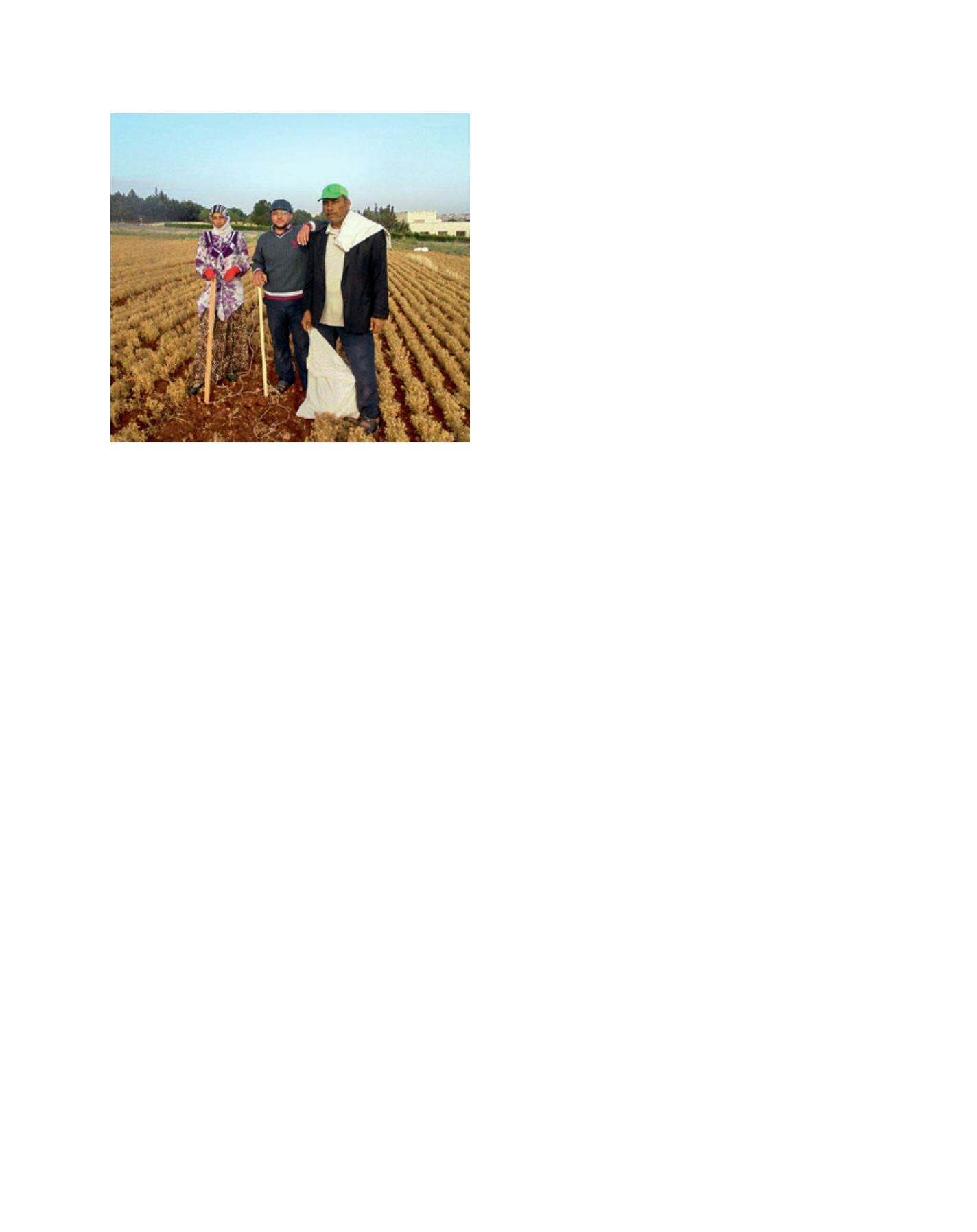

[
] 194
Crop rotations to increase soil fertility and microcatch-
ment water harvesting have improved livestock production,
including the milking and health of the small ruminants
such as sheep and goats. Small ruminants are a major
source of income for the women members of the family,
and any improvements in production benefits the family at
large. In Iraq, zero tillage on 40 farmer fields demonstrated
an almost 50 per cent increase in barley yields in some
cases. The technology is finding its way to family farmers
with wide-scale adoption because it saves on energy, labour
and time. Economic analysis in the case of Iraq shows that
adopting zero tillage improves profitability by US$355 per
hectare, a big economic gain for the family in the current
context of Iraq.
The social sustainability of small family farming can be
achieved through generating more lucrative on-farm activi-
ties and additional off-farm employment opportunities for
family farming members. Adding value to smallholder live-
stock production, especially, is a big boost to the family
because livestock is often under the responsibility and
care of women members of the family. In the dry areas in
Afghanistan, a project funded by the International Fund for
Agricultural Development and implemented by the Afghan
Ministry of Agriculture, Irrigation and Livestock along with
ICARDA developed a package of technologies to improve
goat and forage production systems for women farmers, the
poorest and most vulnerable group in the country. More
than 1,000 women have been trained on goat management,
hygienic milk production and improved feeding methods
with a good market potential for a range of products such as
cheese, yoghurt and cashmere. Working also with women
members of family farms in Kyrgyzstan and Tajikistan,
ICARDA is improving livestock productivity and quality
to develop value-added yarn products such as felt rugs and
carpets for export to the United States and to Europe.
In addition to raising household income and productiv-
ity at the level of the family farm, there is also wide scope
to improve other aspects that contribute to the quality of
life for family farming members in the drylands. Many of
the world’s family farms can benefit from improving infra-
structure in the rural areas where they are located (roads,
bridges, electricity, water and sanitation) and by providing
institutional services such as childcare facilities, primary
and secondary education, health services, and youth and
women’s programmes. There is huge scope for social safety
net programmes and initiatives to empower women to take
decisions about agriculture and to improve their control over
resources, as well as by building policies and institutions
that support social and gender equity.
Small family farmers have always struggled with access-
ing markets, with middlemen often distorting prices and
impacting returns to farmers. Consequently, a significant
amount of work is needed to link family farmers to local
and international markets directly. There are many examples
of successful farmers’ associations and cooperatives which
have connected farmers directly to markets and created
immediate benefits to farming families. There is also scope
for communication technologies, such as cell phones, to
empower farmers with up-to-date information on market
prices to be able to negotiate with buyers from a position
of strength. Finally, family farms also need access to credit
and insurance to be able to run their farms as small busi-
nesses. Institutions, processes and policies are needed, with
the engagement of both the public and private sectors, to
facilitate the access of both women and men members of the
family farm to credit and insurance.
Supported by new types of partnerships, enabling policies,
institutions, political commitment and investments in innova-
tive research and development, family farms in the drylands
can be economically, socially and environmentally sustaina-
ble. They can also be the key to rural transformation. Tapping
the potential of the family farms will require keeping them
the central focus of research and development efforts and will
require new innovative modalities for action to support equal-
ity, fairness and inclusion of the millions of small family farms
located in the dryland regions. Policy, research and develop-
ment dialogues must – above all – guarantee the inclusion
of the youth and women.
It is useful to recall the example of Viet Nam, where strong
pro-smallholder development activities, many of which were
focused on family farms, transformed the rural landscape
from a poor underdeveloped and food insecure country to
a country that is now exporting food and classified as lower
middle-income. The drylands can learn from the experiences
of Viet Nam and other countries.
Many smallholder farmers in the region are trapped in
a perpetual cycle of poverty, poor crop yields, scarcity of
natural resources, and a lack of supportive policies and
institutions. Existing science and technology tools and
resources offer the capability to increase the agricultural
production of small family farms, but sustainable manage-
ment of natural resources must be the cornerstone of the
family’s agricultural practices in the fragile drylands. As
demonstrated by the examples above, investment in science
and technology to support agricultural development for
family farms is critical.
Most of the food produced in the drylands comes from small family farms
Image: ICARDA
D
eep
R
oots
















